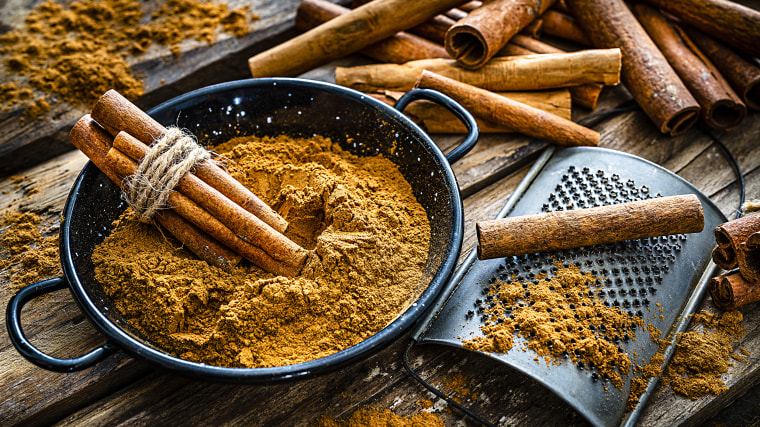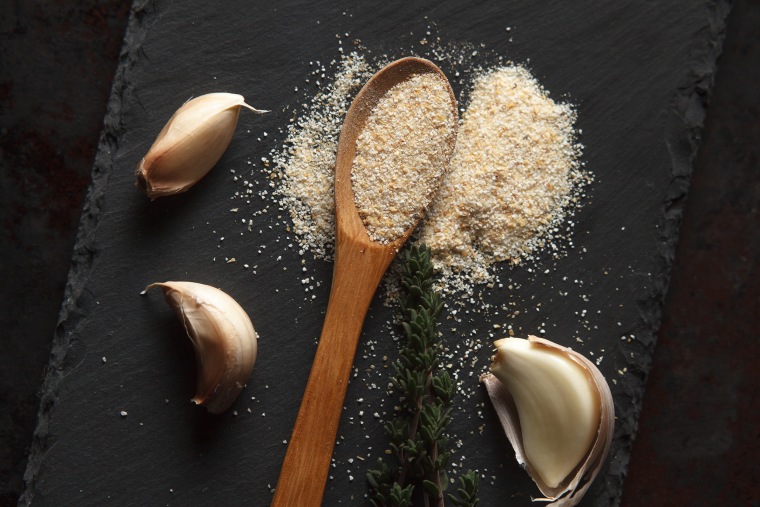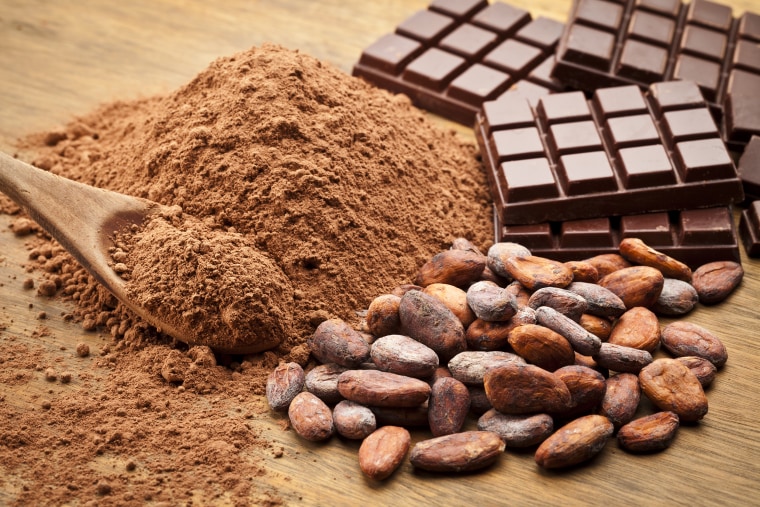Some nutrition changes involve more effort than others. For example, cooking more meals at home can be a challenge for time-pressed people — a.k.a. everyone — but sprinkling something on your food? That’s something even the domestically-challenged among us can do. Here are some of the healthiest ingredients to sprinkle on your food.
What makes a healthy sprinkle?
Many plant-based foods have vitamins, minerals, anti-inflammatory healthy fats, antioxidants and other health-promoting properties. Since most disease processes begin with free radical cellular damage and chronic inflammation, adding more plant foods — even in small amounts — can help you avoid some negative health consequences and lower your risk of several chronic conditions.
Plus, your microbiome helps regulate inflammation, blood pressure, blood sugar, and moods — in other words, your health. So, the fiber, prebiotic substances, and other nutrients in healthy sprinkles do their part via their impact on your gut health.
Research from the American Gut Project found that people who consumed 30 different types of plants per week have greater gut bacterial diversity–a marker of better gut health–than those who consumed ten or fewer plants, Kate Scarlata MPH, RDN, and author of The Low FODMAP Diet Step by Step, explains. Therefore, sprinkling plant compounds on your foods can help you get more plant diversity.
How much of a sprinkle can make a difference?
Truth be told, a tiny sprinkle of anything probably won’t do much for your health. So instead, try adding a bigger shake to meals and snacks or multiple sprinkles during the day.
Scarlata says that for seeds, a tablespoon or more can be counted toward your goal of 30 unique plant foods per week and will also contribute meaningful levels of polyphenols, flavonoids, phytosterols, magnesium, fiber, and healthy fats that play an essential role in preventing and treating diseases, in part because of their impact on our gut microbiome. But for some spices, smaller sprinkles have been associated with health payoffs.
Try not to get obsessed with serving amounts when it comes to sprinkle-ons. Some nutritional studies do look at specific amounts — or specific amounts in supplement form — and other studies use food frequency questionnaires that compare intake levels. But that’s what happens in a lab. For general health, the point is to include these foods as often as possible — even if you aren’t eating a full serving. There are still benefits!
Basically, every little bit counts. For example, if you ate a tablespoon of hemp seeds, you’re getting 3 grams of protein plus omega-3 fatty acids and other nutrients, including 16% of your daily magnesium requirement. That may not be all the magnesium you need in a day, but it gets you closer the the daily recommendations. Not only that, but even a hefty sprinkle contributes to the plant diversity that Scarlata recommends.
In other words, use these nutritional sprinkles as a fun and easy way to add nutrients into your diet, but don’t try to rely on them to meet all your nutritional needs. Experiment with these sprinkles and enjoy them!

Cinnamon
Cinnamon is an antioxidant-rich spice with anti-inflammatory, anti-cancer, and antimicrobial properties. Studies suggest that cinnamon may help promote healthy blood sugar levels, particularly when eaten in conjunction with other strategies that help control blood sugar. The lowest dose associated with benefits is the equivalent of ⅔ teaspoon of ground cinnamon.
Because cinnamon is a sweeter spice, it basically tricks your tastebuds into thinking you’re eating something sugary — even when you’re not. So, topping off dishes with cinnamon can help you lower your added sugar intake while also elevating the sweetness in foods.
Try sprinkling cinnamon over:
- Sliced fruit
- Cottage cheese and Greek yogurt
- Nut and nut-less butters
- Sweet potatoes
Hemp seeds
These mild-tasting seeds pack a protein punch, offering 10 grams in 3 tablespoons — an average serving. They’re also rich in plant-based omega-3 fatty acids — a type of good fat that many of us tend to under consume. Plus, a serving of hemp seeds is rich in magnesium — a mineral involved in regulating your heart rhythm, blood sugar, blood pressure, sleep cycles, and stress response.
A sprinkle of hemp seeds works well over:
- Sauteed greens
- Hummus
- Soup
- Hot or cold cereal
Chia seeds
An ounce of these tiny seeds supplies 10 grams of fiber and 14% of your daily calcium requirements, in addition to other vitamins, minerals and ALA omega-3 fats. Another fun fact: Chia seeds hold 12 times their weight in water. That may explain why one study found that people ate significantly less after eating a chia-enhanced snack. Participants in the study also reported less hunger, better satiety and a reduced desire for sugary foods.
An ounce of chia seeds is about 2 tablespoons. Again, you don’t need to eat this much chia in a day. If you only eat 1 teaspoon, you’ll still get almost 2 grams of fiber.
To boost your fiber intake and potentially score other benefits, sprinkle chia:
● Over toast spread with avocado or nut/nutless butter
● Into unsweetened iced tea
● Into batters for baked goods, pancakes, and waffles
● Atop yogurt bowls

Garlic
In supplement form, garlic has been shown to help lower blood pressure and cholesterol levels and stimulate the immune system. A 2021 review suggested that compounds in garlic have immunomodulating, anti-inflammatory, antioxidant and antiviral properties that may help interrupt the transmission of viral infections — and reduce our susceptibility to them. That’s a great reason to load up on garlic, but more research is needed — as are other precautionary measures.
According to the spice company, McCormick, ⅓ teaspoon — a pinch — contains 900 mg of garlic powder, a common dosage used to lower heart disease risk. For reference, 1 garlic clove equates to about 1/8 tsp of garlic powder.
Try sprinkling garlic into:
- Marinades and dressings
- Spaghetti sauce and pasta meals
- Soups and stews
- Stir-fries
Ground flaxseed
The nutrients in ground flaxseed might promote a healthier heart. For instance, one analysis involving 15 studies concluded that consuming flaxseeds for 12 weeks helped lower blood pressure. And the combo of fiber, lignans, and plant-based ALA omega-3s in flaxseeds may help lower inflammation and bolster your body’s internal defenses against heart disease and other chronic health conditions. To absorb all the nutrients from flaxseeds, consume them ground instead of whole.
You can use a sprinkle of ground flaxseeds in:
- Oatmeal or overnight oats
- Energy bites
- Meatloaf and meatballs
- Breading for chicken and fish
Beetroot powder
Adding beetroot juice or powder to your regimen may boost your energy, endurance, and strength during workouts. That’s because beets are high in natural nitrates, which get converted into nitric oxide in your body. This compound relaxes the lining of your blood vessels and improves blood flow, which allows your muscles to get more oxygen. Plus, better blood flow promotes healthier blood pressure levels.
Beetroot powder is made from dehydrated and ground beets, so when buying it, opt for a product that’s 100% beets and avoid anything with sweeteners or extra add-ins. One tablespoon of beetroot powder is equivalent to about 3 beets and a serving size is about 2 teaspoons.
You can add a heaping sprinkle of beet powder to:
- Smoothies
- Chia pudding
- Hummus
- Hot cocoa and matcha lattes
Red pepper flakes
Capsicum is the compound responsible for bringing the heat to red pepper. It’s also been studied for health benefits, including a lower risk of dying prematurely. In one large study, eating chili pepper — a.k.a. red pepper flakes — four times per week was associated with a 28% lower chance of dying from any cause compared to those who rarely or never ate this spice. Another study suggested that individuals who ate spicy foods once a week — including dried chili peppers as well as other forms of chili peppers — had a 10% reduced risk of death compared with those who kept it mild and ate these foods less than once a week.
Add a sprinkle of this fiery condiment to:
- Pickles
- Pizza
- Honey
- Soups and stews

Cacao Powder
Cacao powder is rich in polyphenol antioxidants known as flavanols, which help relax and widen blood vessels. That translates to better circulation and the health benefits stemming from improved blood flow. For example, cacao flavanols have been tied to better brain aging with less cognitive decline, lower blood pressure and a reduced risk of dying from heart disease.
Whether cacao powder is different from cocoa powder is the source of some disagreement. Whichever one you choose, opt for a product that’s non-alkalized or non-Dutched. Alkalizing cacao reduces bitterness but can also destroy some of the healthful compounds. Cacao powder is typically non-alkalized, so it maintains the biological substances you want.
A serving of cacao powder is 2-3 tablespoons.
Add a dash of cacao to:
- Chili
- Nut or nut-less butters — fold to mix
- Coffee
- Sliced bananas
Nutritional Yeast
Vegans and vegetarians have been using nutritional yeast — a flakey, non-dairy seasoning with a cheesy flavor — for years, but recently, it has become more mainstream.
Two tablespoons of nutritional yeast contain 5 grams of complete protein, meaning that — unlike many plant proteins — it has all nine essential amino acids. It’s also rich in B vitamins, especially vitamin B12, which is only found in animal products or fortified foods — like nutritional yeast. That makes nutritional yeast an important source of nutrients in exclusively plant-based diets, but we can all benefit from the nutritional boost. Because nutritional yeast is so versatile, it’s easy to add a sprinkle to numerous foods.
Try topping these foods off with nutritional yeast:
- Popcorn
- Baked potatoes
- Roasted vegetables
- Soup
What’s not worth a sprinkle
As a dietitian, I take a food-first approach, and all of these ingredients are whole foods or whole food derivatives. Other types of sprinkles — like, say, bee pollen — can potentially benefit some people, but there may be side effects to watch out for. You might want to skip anything that makes claims that aren’t back up with clinical evidence.
It’s worth reiterating that any product that claims to be a cure-all is worth skepticism. Unfortunately, the idea that there’s a magic powder that you can sprinkle onto your food that will make you perfectly healthy overnight is about as plausible as a magic beanstalk.






